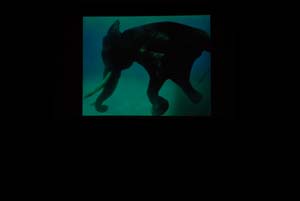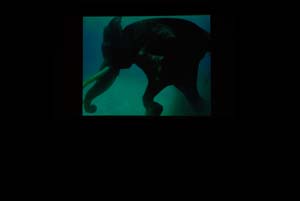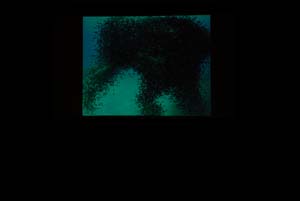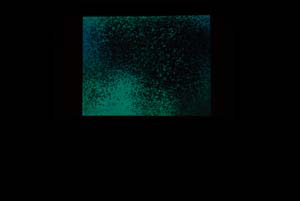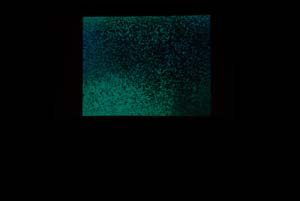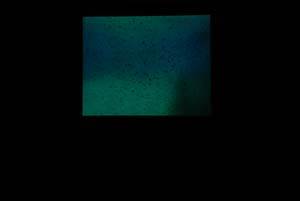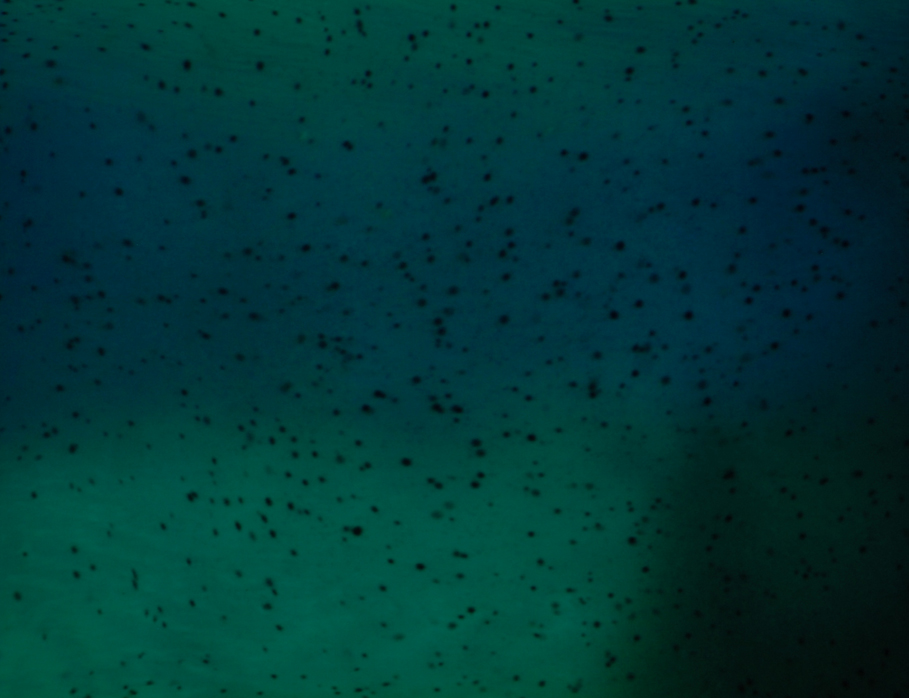Sheba Chhachhi Hamburg: Unterschied zwischen den Versionen
Till (Diskussion | Beiträge) |
Till (Diskussion | Beiträge) |
||
| Zeile 7: | Zeile 7: | ||
<br> | <br> | ||
| − | '''Videoprojektion. Sheba Chhachhi's Beitrag für die Ausstellung [[Ausstellung Freie Flusszone|Yamuna]], kuratiert von Ravi Agarwal: ''' | + | '''Videoprojektion. Sheba Chhachhi's Beitrag für die Ausstellung [[Ausstellung Freie Flusszone|Yamuna]], kuratiert von Ravi Agarwal: '''<br> |
| − | [[Image:72 300 DSC 5505.jpg | + | === The Water Diviner === |
| + | Excerpted from a site specific installation with the same title using books, light, light boxes, video and water at the Delhi Public Library, 2008. | ||
| + | |||
| + | |||
| + | [[Image:72 300 DSC 5505.jpg]] [[Image:72 300 DSC 5508.jpg]] [[Image:72 300 DSC 5509.jpg]] | ||
<br> | <br> | ||
| − | [[Image:72 300 DSC 5510.jpg | + | [[Image:72 300 DSC 5510.jpg]] [[Image:72 300 DSC 5511.jpg]] [[Image:72 300 DSC 5512.jpg]] |
<br> | <br> | ||
| − | [[Image:72 909 DSC 5512.jpg | + | Sheba Chhachhi writes: |
| + | |||
| + | Every day thousands of anointed coconuts, wrapped in consecrated threads, in turn wrapped in plastic bags plop into the water to float briefly before being salvaged by scavenger divers who efficiently extract any usable material and throw the rest back into the ever open arms of the mother river. Mothers, used to taking on more than they can bear, inscribed within culture as all sacrificing, all embracing. Mothers, who, as all children know, can always be relied on to clean up, take care, save, protect, absorb, contain. | ||
| + | |||
| + | In myth the River Yamuna is Yamuna Devi, goddess, lover, mother to millions of devotees. The huge repository of texts and ritual practices which inform her worship, reveal a rich , embedded eco philosophy, articulating an ideal mode of being in relation to the river, and to nature. | ||
| + | |||
| + | Why does this not translate into eco conscious behavior? Why does the devotee seem indifferent to the fact that the river is dying? Why is there a disconnect between the ecological wisdom embedded in our cultural practices and current environmental conditions? Is it possible to simultaneously worship and destroy? | ||
| + | |||
| + | The feminine theology of water and nature works paradoxically. In itself, the act of sacralizing nature can both generate the desire to protect and nurture as well as obscure the need to protect. The divinity gets dematerialized – separated from the embodied material body, perceived as all powerful and meta human, meta physical, therefore not needing to be cared for by ordinary mortals. | ||
| + | |||
| + | On the other hand, evoking a relationship of love, desire and empathetic oneness with the river, integral to a scared vision of nature, creates an experience of being part of the integrated whole of the ecosystem for each individual. However, for the alienated urban citizen, religious beliefs have often been reduced to mechanical ritual and televised evangelism. | ||
| + | |||
| + | Could the recovery of a forgotten affinity with water, with the river as river and as goddess , help develop an alternative ecological imaginary ? A way of conceptualizing the environment that is neither instrumental, nor abstracted piety? Could recuperating the mythic into an embodied perception of the river offer a path of engagement with her desperate condition? | ||
| + | |||
| + | In my work as an installation artist and photographer, I seek to investigate the historical and metaphoric relationships which mediate between human beings and nature, ranging from the meteorological to the mytho‐poetic, the religious to the mercantile. | ||
| + | |||
| + | In works such as the video installation Neelkanth: poison /nectar (2003) and The Water Diviner (2008) to name just two, the mythic and the social conjoin to open reflection on questions of urbanization, waste, cultural memory and the possibilities of transformation. A series of works about the Yamuna bring simultaneous times and realities into conversation. Here women , mythologized or ordinary, are key protagonists appearing as displaced, dispossessed urban survivors, mutants, goddesses… | ||
| + | |||
| + | These experiments continue, as I bear witness to the effects of globalization, the rupture of personal and collective memory, and seek to affirm the possibility of an alternative imaginary through my practice. | ||
| + | |||
| + | [[Image:72 909 DSC 5512.jpg]] | ||
Version vom 6. Dezember 2011, 14:25 Uhr
Sheba Chhachhi
Sheba Chhachhi (artist, born 1958 in Harar, Ethiopia, lives and works in Delhi) explores themes of gender, asceticism, marginality, industrialism and the relationship between man and nature in her work. Chhachhi originally worked in a photo-journalistic format, joining and studying groups of women operating on the fringes of society, most famously tracing the lives of female ascetics living in northern India. In her current body of work, Chhachhi has developed a new artistic language by creating photographic light boxes which consist of a series of shimmering layered screens, each printed with a photographic collage made of diverse elements. When viewed, the works take on a startling dimensionality as each layer merges in and out of each other to create a vibrant almost cinematic aesthetic.
www.naturemorte.com/artists/sheba-chhachhi
Videoprojektion. Sheba Chhachhi's Beitrag für die Ausstellung Yamuna, kuratiert von Ravi Agarwal:
The Water Diviner
Excerpted from a site specific installation with the same title using books, light, light boxes, video and water at the Delhi Public Library, 2008.
Sheba Chhachhi writes:
Every day thousands of anointed coconuts, wrapped in consecrated threads, in turn wrapped in plastic bags plop into the water to float briefly before being salvaged by scavenger divers who efficiently extract any usable material and throw the rest back into the ever open arms of the mother river. Mothers, used to taking on more than they can bear, inscribed within culture as all sacrificing, all embracing. Mothers, who, as all children know, can always be relied on to clean up, take care, save, protect, absorb, contain.
In myth the River Yamuna is Yamuna Devi, goddess, lover, mother to millions of devotees. The huge repository of texts and ritual practices which inform her worship, reveal a rich , embedded eco philosophy, articulating an ideal mode of being in relation to the river, and to nature.
Why does this not translate into eco conscious behavior? Why does the devotee seem indifferent to the fact that the river is dying? Why is there a disconnect between the ecological wisdom embedded in our cultural practices and current environmental conditions? Is it possible to simultaneously worship and destroy?
The feminine theology of water and nature works paradoxically. In itself, the act of sacralizing nature can both generate the desire to protect and nurture as well as obscure the need to protect. The divinity gets dematerialized – separated from the embodied material body, perceived as all powerful and meta human, meta physical, therefore not needing to be cared for by ordinary mortals.
On the other hand, evoking a relationship of love, desire and empathetic oneness with the river, integral to a scared vision of nature, creates an experience of being part of the integrated whole of the ecosystem for each individual. However, for the alienated urban citizen, religious beliefs have often been reduced to mechanical ritual and televised evangelism.
Could the recovery of a forgotten affinity with water, with the river as river and as goddess , help develop an alternative ecological imaginary ? A way of conceptualizing the environment that is neither instrumental, nor abstracted piety? Could recuperating the mythic into an embodied perception of the river offer a path of engagement with her desperate condition?
In my work as an installation artist and photographer, I seek to investigate the historical and metaphoric relationships which mediate between human beings and nature, ranging from the meteorological to the mytho‐poetic, the religious to the mercantile.
In works such as the video installation Neelkanth: poison /nectar (2003) and The Water Diviner (2008) to name just two, the mythic and the social conjoin to open reflection on questions of urbanization, waste, cultural memory and the possibilities of transformation. A series of works about the Yamuna bring simultaneous times and realities into conversation. Here women , mythologized or ordinary, are key protagonists appearing as displaced, dispossessed urban survivors, mutants, goddesses…
These experiments continue, as I bear witness to the effects of globalization, the rupture of personal and collective memory, and seek to affirm the possibility of an alternative imaginary through my practice.
